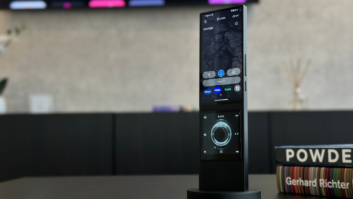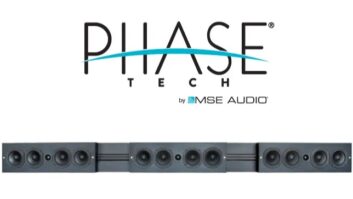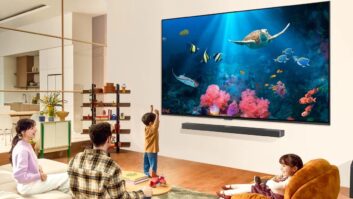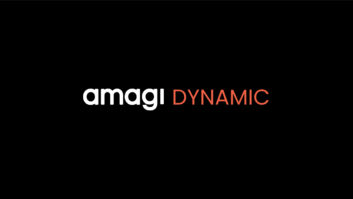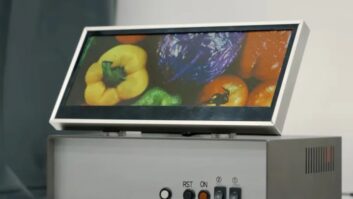Los Angeles –
is updating its
technology, currently available in select AV receivers and TV sets, with a
TV-dedicated version optimized for two-channel playback and small TV speakers,
said Audyssey co-founder and CTO Chris Kyriakakis.
Like the current version of Dynamic
Volume, the new version – called Audyssey Dynamic Volume TV — tackles
volume-fluctuation issues not covered by the
Commercial
Advertisement Loudness Mitigation (CALM) Act
, which mandates that
broadcasters and cable operators set a uniform loudness level for commercials
and TV programs. CALM, which goes into effect early next year, also imposes
mandatory broadcast standards designed to deliver uniform channel-to-channel
loudness levels.
The two issues not addressed by the
CALM Act but tackled by both versions of Audyssey Dynamic Volume technology include
volume fluctuations that occur when a
TV’s video inputs are switched among different video sources. The second issue
is volume fluctuations occurring when a TV program transitions from soft to
loud scenes, often blowing listeners out of their chairs when a program
transitions from a dialog scene to an action scene.
The latter issue is a byproduct of soundtracks
being mixed in ideal listening conditions, Kyriakakis explained. As a result, soundtracks contain wider
dynamic range than can possibly be experienced comfortably at home. “A home’s
background noise buries the soft passages, and when you turn up the volume to compensate,
the loud passages are too loud,” he said.
For use in TVs, the new TV-dedicated
version of Dynamic Volume uses a revised algorithm that deletes the volume solutions
addressed by the CALM Act, enabling the technology to focus more on resolving a
TV’s remaining volume-fluctuation problems and take into account the small
low-power speakers in a TV, the company explained.
The new technology, for example, expands “the library
of reaction times to cover more detailed changes in movie and TV content,” a
spokesman said. By using a library of reaction times, he explained,
Audyssey Dynamic Volume TV avoids the “pumping” sound created by competing technologies
that use Automatic Gain Control (AGC). AGC “suffers when content changes
from soft to loud and back to soft continuously as in movies,” the spokesman
said. “AGC methods tend to overshoot and then backtrack, and this
causes pumping artifacts.” Dynamic Volume, in contrast, “uses a look-ahead
buffer to estimate the rate of change in content level and then adjusts the
timing of the reaction [based on a library of reaction times] to avoid AGC-type
artifacts.”
The revised technology also
compensates for small low-power speakers, which cannot play loud without
distorting, by perceptually matching the content’s dynamic range [soft to loud
range] to the TV speakers’ available dynamic range, the company said. Typically,
a spokesman explained, soft portions of content are inaudible through TV
speakers because of background noise in the room, and the loud parts are
“lost” because the system can’t reproduce them, the company
continued.
Like the current Dynamic Volume
technology, Dynamic Volume TV also dynamically
and automatically compensates for the human ear’s lower sensitivity to bass and
treble sounds as volume levels decrease.
Dynamic Volume TV will probably be
available in TVs in the first quarter of 2012 in the U.S., Audyssey said.
Settop boxes with the technology could be available as early as the fourth
quarter of this year.
Technologies from companies such as
SRS Labs and Dolby Labs also address all of the volume-fluctuation issues of
the Audyssey technologies. SRS Labs’s TruVolume, for example, is available in
most Vizio TV sets and in Vizio soundbars and in almost all Samsung TVs in the
U.S., a spokesman said.
Dolby Volume is in select Toshiba
TVs, Dolby said.





